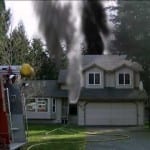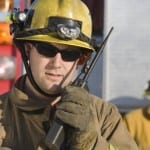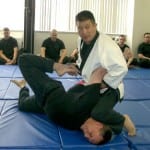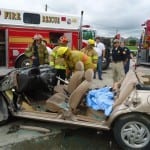 During SAMatters Tour events there are lots of discussion happening among attendees and some great questions being asked. This episode addresses some of the questions fielded during live events.
During SAMatters Tour events there are lots of discussion happening among attendees and some great questions being asked. This episode addresses some of the questions fielded during live events.
Length: 27 minutes
click the YouTube icon to listen
_____________________________________________________
If you are interested in taking your understanding of situational awareness and high-risk decision making to a higher level, check out the Situational Awareness Matters Online Academy.
CLICK HERE for details, enrollment options and pricing.
__________________________________
I’m coming to you today from beautiful Spokane, Washington where I am in town to deliver a flawed situational awareness program for the Spokane Fire Department and then I am heading over to Kalispell, Montana where I am going to deliver two programs, Mental Management of Emergencies and Flawed Situational Awareness for an event hosted by the Flathead County EMS. Thanks to both organizations for hosting these important programs.
In today’s episode I am going to take on 5 questions presented during live events. If you’ve never been to one, the live programs are very interactive and there are lots of discussions and questions asked. Some of the questions are so good they inspire me to write articles on the blog. Some are so good they inspire me to do research. And all of them are worth sharing. So in today’s episode I am going to address five program attendee questions. Let’s jump into this Q & A session:
 QUESTION 1 : “You’ve shared many of the challenges we face as first responders when our brains gets stressed. Are there any good things that come from our reaction to stress?
QUESTION 1 : “You’ve shared many of the challenges we face as first responders when our brains gets stressed. Are there any good things that come from our reaction to stress?
ANSWER: Absolutely! In fact, if your brain were unable to mount a highly regulated reaction to stress, you would die. The stress reaction is what allows you to react to danger. It allows you to make quick judgments and rapid reactions to danger. Your stress reactions are hereditary. Your ingrained reaction to stress dates all the way back to the early existence of humans – your cave dwelling ancestors. When faced with danger, like a saber-toothed tiger, humans adapted reactions – lifesaving physical, chemical and psychological responses.
The stress reaction enhances your physical strength. It also improves the acuity of your senses. The chemicals released enhance your vision and hearing. You may be able to see things that you otherwise would not be able to see if you were not under stress. You may be able to hear things that you otherwise would not be able to hear if you were not under stress.
Some responders report an enhanced sense of awareness, accompanied by a burst of energy when they arrive at emergency scenes. They say that stress improves their performance. Indeed, stress can improve short-term performance!
However, it is important to realize the stress reaction your body mounts is designed for short duration threat events. As for the time duration of the reaction, think in terms of how long the threat event lasted when a cave dweller was being attacked by a saber-toothed tiger. The whole event was over in a matter of seconds to minutes. The chemicals released under stress change the body – biologically, chemically, electrically and psychologically, but in short duration.
Once the chemicals dissipate throughout the body and the processes reset, you may start to suffer from some less than desirable stress-induced biological, chemical, electrical and psychological side effects, which have been discussed in numerous articles on the SAMatters website.
 QUESTION 2: “You talked a lot in the program about identifying and understanding the critical clues and cues during size-up. I’m a newer firefighter. Is there anything I can do to get better at this skill?
QUESTION 2: “You talked a lot in the program about identifying and understanding the critical clues and cues during size-up. I’m a newer firefighter. Is there anything I can do to get better at this skill?
ANSWER: I am asked variations of this question many times throughout my travels. Newer (and less experienced) first responders want to know how they can develop and maintain better situational awareness. The first step, of course, is understanding what situational awareness is, how it is developed, maintained, lost and regained. Those lessons are shared amply throughout articles on the SAMatters website.
Next, is to identify which clues and cues are the most important based on the type of emergency being handled. For example, at a structure fire, those might include: Quantity and quality of staffing and other resources available; building construction and the rate of decomposition; smoke and fire conditions – color, volume, velocity and density; and finally, the speed of the incident – how fast conditions are changing, often influenced by the volume of fire, volume of contents and wind conditions.
Next, is to assemble those clues and cues into a coherent meaning about what is happening in the context of space and time. Finally – and this is often the most difficult, especially for a newer responder with limited experience – is to make an accurate prediction about the future events and how they will unfold. The skill needed to “look into the future” requires experience and imagination. Newer responders can accelerate their experience by immersing themselves in case studies, near-miss reports, casualty reports and videos of fire – especially where things go wrong.
One way to develop imagination is to stop reading, or to pause the video, and make a prediction about how things are going to turn out. This entails not only predicting the outcome (which may be obvious if you’re reading a line-of-duty death report), but also predicting the sequence of events that lead up to the catastrophe. Grade yourself on how accurate you were. Then assess your performance. If you were accurate, what were the clues and cues that led to the accurate predictions. If you weren’t accurate in your predictions, determine if you missed important clues and cues, or if important clues and cues were missing, or if you misunderstood what they meant.
Each time you practice these skills, you are learning. The more realistic you make the experience in your mind, the greater the emotional attachment to the incident and the more likely the lessons will seat deep into your memory. Doing this can accelerate your learning and improve your situational awareness.
 QUESTION 3: Do you have any advice for how a young officer can develop command competency (including command situational awareness)?
QUESTION 3: Do you have any advice for how a young officer can develop command competency (including command situational awareness)?
ANSWER: There are several components to the answer for this question. First, I think that young officers need to ensure they have a well-developed set of technical firefighting skills and experience before they step foot into a commander’s role. The knowledge, skills and abilities needed to command an incident are very different than the skills needed to perform firefighter duties. Equally, the situational awareness developed and maintained by a commander is also different than what is needed for a firefighter.
In other words, commanders sometimes capture, process and comprehend different clues and cues (versus a firefighter) in the formation of their situational awareness. Commanders may also make sense of the clues and cues differently than a firefighter or company officer. For one, the commander should be watching the big picture and their mind should be on future events as much as current events. The commander is, arguably, in the best position to see the bad things coming in time to change the outcome.
Having confidence in your command knowledge and experience, coupled with command presence, are skills that must be taught and practiced. One of the best ways to do this is to assign new commanders a mentor to help coach and develop command skills. It’s imperative the mentor be both qualified and willing to share his or her knowledge. The mentor must also be willing and able to provide the tough feedback that new commanders sometimes need. Even when things go well there are opportunities to improve.
And, perhaps equally important, is when things go well it doesn’t always mean the new commander did his or her job properly. They could have simply been lucky. This is where the mentor can step up and help the new officer correct flaws that went undetected during the incident (because luck was on the side of the new commander). If these flaws are not fixed early, they can become reinforced and, even worse, turn into bad command habits.
 QUESTION 4: During the presentation you said the training should be as realistic as possible. Our police department was doing “realistic” hand-to-hand combat training. So realistic, in fact, that some officers were getting hurt. So we stopped doing that. Now, the instructors tell us to only put forth “ten percent” effort… “go through the motions” of how to subdue someone, but don’t actually do it because someone might get hurt. Based on what you just taught us, is this a set-up for failure?
QUESTION 4: During the presentation you said the training should be as realistic as possible. Our police department was doing “realistic” hand-to-hand combat training. So realistic, in fact, that some officers were getting hurt. So we stopped doing that. Now, the instructors tell us to only put forth “ten percent” effort… “go through the motions” of how to subdue someone, but don’t actually do it because someone might get hurt. Based on what you just taught us, is this a set-up for failure?
ANSWER: First off, I would say that training should be as realistic as safety will permit. This is an important caveat. We want to train in realistic ways, but we don’t want to create casualties as a result of our training. With that goal in mind, there is a limit to how realistic we can make training evolutions. That said, I think some organizations take safety during training evolutions to an extreme, and thus, create VERY unrealistic training scenarios that set-up responders for failure.
When students are being taught about a new skill, they develop two types of memory – cognitive memory (the memory of information… the WHAT am I supposed to do) and kinesthetic memory (the memory of muscle movement… the HOW am I supposed to do it). This brings up a critical point for how the brain learns: The muscles don’t learn from verbal instructions. The muscles learn from muscle movement. If, for the sake of safety, we tell responders (verbally) to perform tasks one way, and then have them actually perform it a different way (hands-on), the muscles will remember the hands-on way they were taught, not the verbal instructions the student was told.
Speaking directly to the question asked by the police officer after the program – if the police officers are TOLD to use full force during a confrontation and then only allowed to practice HANDS-ON using ten percent force, the officer’s muscles are likely to remember what they were taught to do – and that is to use ten percent force during a real altercation. In fact, if during the training the officer’s mindset is “don’t hurt the other person” then the memory will recall that lesson during the real event. So what’s the solution?
I recommended to the officer asking the question that the department employ the services of a professional fighter and suggested either a professionally schooled cage fighter or a martial arts instructor. These people are taught how to defend themselves and how to deflect blows and how to fall down without getting hurt. I also suggested protective gear for the officers, including personal padding and floor padding. The officers can also use their full force on mannequins or props, not unlike what the military does with force props or sports team do with impact sleds.
The bottom line is – I think it’s a huge mistake to teach an officer to use ten percent force in training and then verbally tell the officer “now… remember… when you’re out on the street… use full force.” The brain simply doesn’t process the lessons that way. Remember: The muscles learn from muscle movement! Not from verbal instructions.
 QUESTION 5: There are some safety training programs our employees take that are online, such as fire extinguisher usage. Is this type of training good? Should we also be doing hands-on training?
QUESTION 5: There are some safety training programs our employees take that are online, such as fire extinguisher usage. Is this type of training good? Should we also be doing hands-on training?
ANSWER: There are two types of learning I want to discuss that will help answer this question. The first is cognitive memory – the memory of information. The second is kinesthetic memory – the memory of muscle movement. When you are sitting at the computer (or in a classroom) you are developing cognitive memory (the memory of WHAT you need to know). There is nothing wrong with learning the “what” in a classroom or online.
However, when the WHAT you need to know also requires the performance of a physical task, it is imperative that students actually learn and practice the physical tasks. This develops the kinesthetic memory (the memory of HOW to do the task). The muscles don’t learn “how” to perform tasks from verbal instructions or from taking an online class. If a program teaches physical tasks, then the students should have a hands-on session to practice (and learn) the physical tasks.
If the online course or classroom program does not require the performance of a physical task, then it is not necessary to have a hands-on session. It is common for programs to contain both – teaching WHAT and HOW. When your on-line program teaches what and how, follow-up the online or classroom program with a hands-on skill session that develops the muscle memory. Also use the hands-on sessions to reinforce the lessons taught during the cognitive learning sessions. This marries up both lessons and improves memory.
If you have questions you’d like to have me address on this show or to write about on the blog, you can reach me by visiting the SAMatters.com website and clicking on the Contact Us link.
Intro music
Safety Dance (1982)
Men Without Hats
GMC – Virgin Records
Our sponsor:
Midwest Fire
MidwestFire.com

Situational Awareness Matters! website
www.SAMatters.com
Firefighter Near Miss Reporting System
http://www.firefighternearmiss.com/
The mission of Situational Awareness Matters is simple: Help first responders see the bad things coming… in time to prevent bad outcomes.
Safety begins with SA!
Share your comments on this article in the “Leave a Reply” box below. If you want to send me incident pictures, videos or have an idea you’d like me to research and write about, contact me. I really enjoy getting feedback and supportive messages from fellow first responders. It gives me the energy to work harder for you.
Thanks,
How to reach me…
Email: Support@RichGasaway.com
Phone: 612-548-4424
Facebook Fan Page: www.facebook.com/SAMatters


